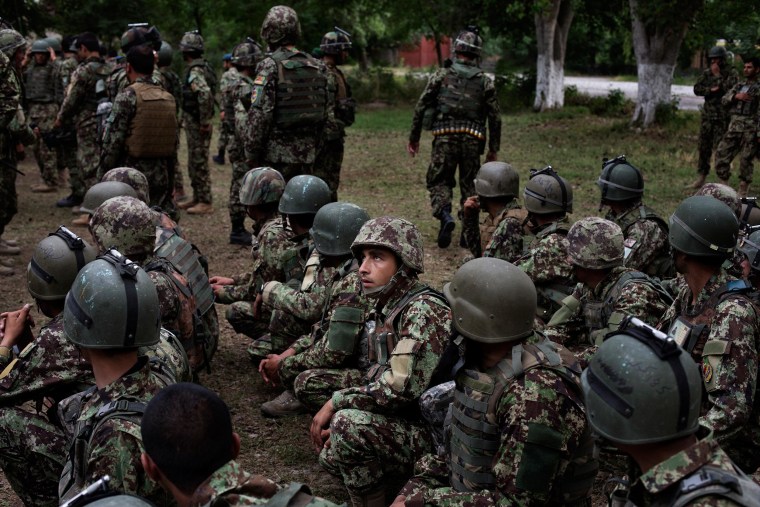Isatullah stood over the bundle of explosives with his arms crossed behind his back, contemplating it. At 32 years-old, he was a sergeant in the Afghan National Army, a counter-improvised explosives engineer. He was tall and thin and his body armor looked too short for him. His helmet sat too high on his head. At his feet laid a pile of homemade explosives wrapped in bright yellow plastic, a Taliban IED that he had detected and was going to blow up as safely as he could in a shallow wash a short distance from the other soldiers.
He knelt down and prepared the charge, securing loose ends of wire with more yellow tape, arranging it on top of the bomb, a cylinder about 18 inches high and big enough to incinerate a pickup truck. He worked in silent concentration, a total professional.
We all backed away, behind his Humvee, and he came walking slowly toward us, calmly. He seemed confident he had gotten the better of the hidden threat, but kept up a wary respect of it. He stood a hundred yards or so behind the truck and set off the charge; the cloud of dust shot up instantly, then hung above us, and slowly dissipated in the breeze.
Isatullah walked back down the road, one of his crew driving his truck behind, clasping his hands behind his back and chatting quietly with another soldier. He would be dead in two hours. There would be another IED found nearby, he would prepare it the same way, but Isatullah’s enemies would have rigged it to yet another, massive one and his truck would be parked on top of it. He would be cut in half by the blast.
I should have been done with my trip to Afghanistan. I had been there a month, and finished about all the stuff I had planned to do: covering the first round of the elections, which had gone if not smoothly, then at least better than expected. I shot some pictures around Kabul and picked up a couple of small assignments there. I had been down to Kandahar to run around with the police for another assignment.
But this was my first trip to Afghanistan where I hadn’t been out in the districts, hadn’t been out where things were happening, hadn’t seen the fighting against the insurgency up close. It was also midway through the drawdown of U.S. forces in the country and I knew I wouldn’t have another chance to see what was happening on the ground from inside the military bubble.
I had wanted to embed with the Afghan army for a long time. I wanted to get out and see what life was like for the soldiers when the Americans weren’t around. But that is a tricky thing to line up logistically -- transportation being the biggest barrier to getting out in the field with them. They don’t fly around, so you have to drive, and some of those trips can be long drives over short distances through dangerous territory.
So I called up NATO and proposed to the public affairs folks a hybrid embed – basically, get me out in the field and then hand me over to the Afghans. After a couple of weeks of wrangling and explaining and emailing documents back and forth, they agreed. And there I was at Bagram airfield, again, on my way into the east of the country – to Jalalabad first, then on to Pachir Wa Agam, a district in southern Nangarhar that borders Pakistan. It’s the home of the famous Tora Bora cave complex, where Osama had his last stand, and prime Taliban country.
I rode along for 6 days with the 4th Brigade, 201st Corps, on a massive operation to clear the district of insurgents. It was an education, a front row seat on the war we will leave behind in Afghanistan.
